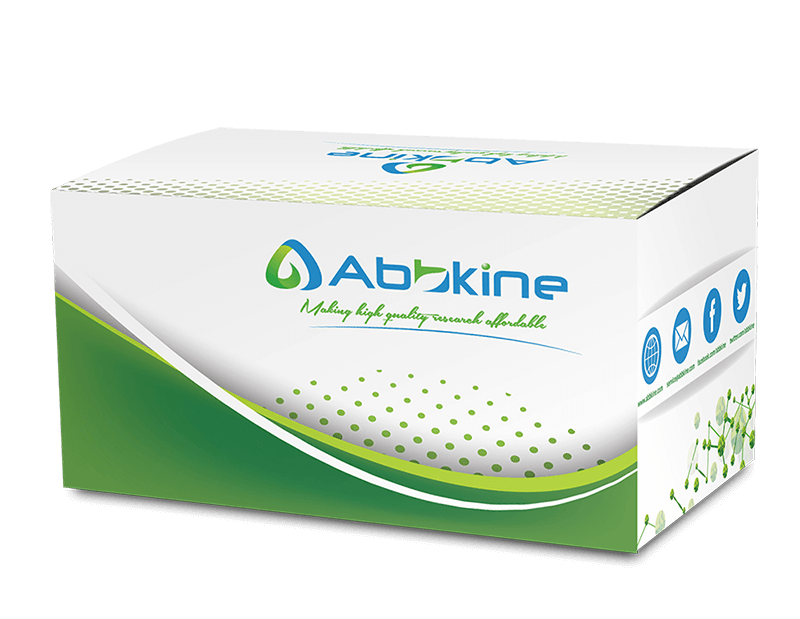

分享产品
GFP标签小鼠单克隆抗体(3D3),磁珠偶联
Magnetic Beads Conjugated Anti-GFP Tag Mouse Monoclonal Antibody (3D3)
产品特点:
选择规格
买2送1活动进行中!购买任意2个规格产品,免费赠送100μL装一支。
活动截止时间:2024年1月31日


买2送1活动进行中!购买任意2个规格产品,免费赠送100μL装一支。
活动截止时间:2024年1月31日
GFP标签小鼠单克隆抗体(3D3),磁珠偶联是一款专为免疫沉淀(IP)设计的核心工具,通过将高亲和力的小鼠单克隆抗体与磁珠共价偶联,实现对GFP融合蛋白的快速捕获与富集,适用于哺乳动物及细菌表达体系中的样品制备与检测流程。
绿色荧光蛋白(GFP)由238个氨基酸组成(26.9 kDa),在蓝光至紫外光激发下发出509 nm的绿色荧光,最早从水母中分离获得。因其自发荧光特性,GFP被广泛用作蛋白标签以追踪目标蛋白的表达与定位。本产品利用小鼠IgG1亚型单克隆抗体(克隆号3D3)特异性识别GFP表位,通过磁珠偶联技术将抗体固定于磁珠表面,形成固相载体。当样本中的GFP融合蛋白与磁珠结合后,可通过外加磁场快速分离复合物,实现高纯度、低背景的IP实验。
专为免疫沉淀(IP)优化,适用于蛋白互作研究、GFP融合蛋白纯化、信号通路分析等场景,尤其适合从细胞裂解液或细菌提取物中快速富集目标蛋白,为下游WB、质谱或功能分析提供高纯度样品。

| 中文名称 | GFP标签小鼠单克隆抗体(3D3),磁珠偶联 |
| 英文名称 | Magnetic Beads Conjugated Anti-GFP Tag Mouse Monoclonal Antibody (3D3) |
| 产品货号 | ABT2024 |
| 免疫原 | 合成多肽 |
| 宿主 | 小鼠 |
| 反应性 | 哺乳动物#细菌 |
| 标签 | GFP |
| 检测类型 | IP |
| 克隆类型 | 单克隆 |
| 亚型 | 小鼠IgG1 |
| 纯化工艺 | 通过使用特异性免疫原的亲和层析,从小鼠腹水中纯化抗体。 |
| 偶联物 | 磁珠 |
| 产品形式 | 液体形式 |
| 储存缓冲液 | PBS缓冲液(pH 7.4),含有0.02%叠氮化钠(防腐剂)。 |
| 保存建议 | 从发货之日起,4°C可稳定保存一年。避免反复冻融或者离心。 |
| 运输条件 | 冰袋运输(蓝冰) |
| 警告 | 本文列出的产品仅供研究使用,不适用于人类或临床诊断。我们产品所推荐应用,不是建议使用我们的产品去违反任何专利或许可证。对于使用本产品可能发生的专利侵权或其他违规行为,我们不承担任何责任。 |
Elution Buffer: 0.1 M Glycine-HCl pH 3.0.
Neutralization Buffer: 1 M Tris-HCl, pH 8.5.
| Catalog No. | Product Name |
|---|---|
| ABT2014 | Magnetic Beads Conjugated Anti-DDDDK Tag Mouse Monoclonal Antibody (1B10) |
| ABT2044 | Magnetic Beads Conjugated Anti-HA Tag Mouse Monoclonal Antibody (4F6) |
| ABT2054 | Magnetic Beads Conjugated Anti-His Tag Mouse Monoclonal Antibody (5C3) |
| ABT2064 | Magnetic Beads Conjugated Anti-Myc Tag Mouse Monoclonal Antibody (2D5) |
| ABT2174 | Magnetic Beads Conjugated Anti-V5 Tag Mouse Monoclonal Antibody (11D5) |
The reagent is only used in the field of scientific research, not suitable for clinical diagnosis or other purposes.
The reagent is only used in the field of scientific research, not suitable for clinical diagnosis or other purposes.
A: 荧光western blotting的结果需要特殊的仪器检测,即一种荧光成像仪器。即运用荧光成像仪可以对荧光WB的实验结果进行成像和数据采集分析。如果希望应用荧光成像做WB,建议选用Abbkine DyLight 680和DyLight 800荧光二抗,货号分别为A23710、A23720、A23910、A23920。
A: 0.5 mg/ml。
A: 甘油是可以减慢抗体分子之间的碰撞,起到抗体保护剂的作用。
杂志名称: Plant Biotechnology Journal | 作者: Chen, Min, et al.
IF: 10.500 | 发表时间: 2025
杂志名称: Traditional Chinese Medicine and Small Molecule Treatment of Tumors | 作者: H Peng, L Jin, Q Zhang, Y Shen,
IF: 3 | 发表时间: 2022
我们的技术团队为您提供全方位的产品支持服务
根据您的研究目标,提供个性化的实验设计方案
经验丰富的技术专家协助您解决实验中遇到的问题
7x24小时在线技术支持,随时为您答疑解惑
提供免费样品试用,让您先试后买更放心
